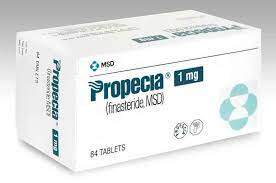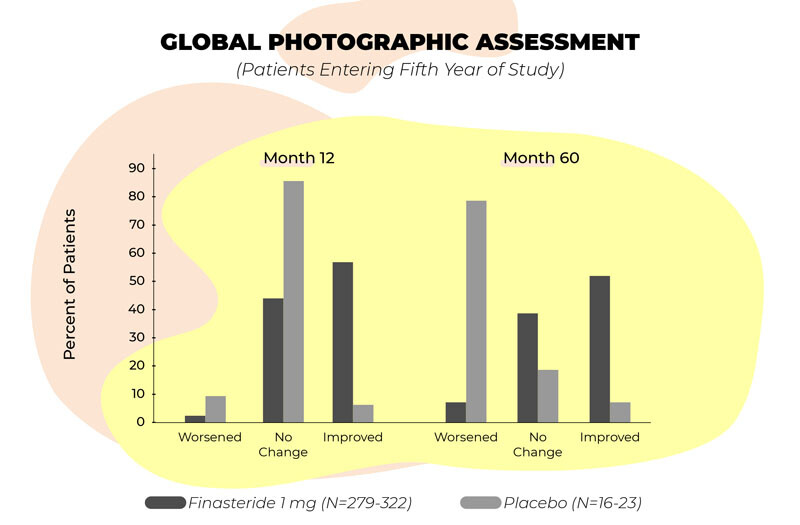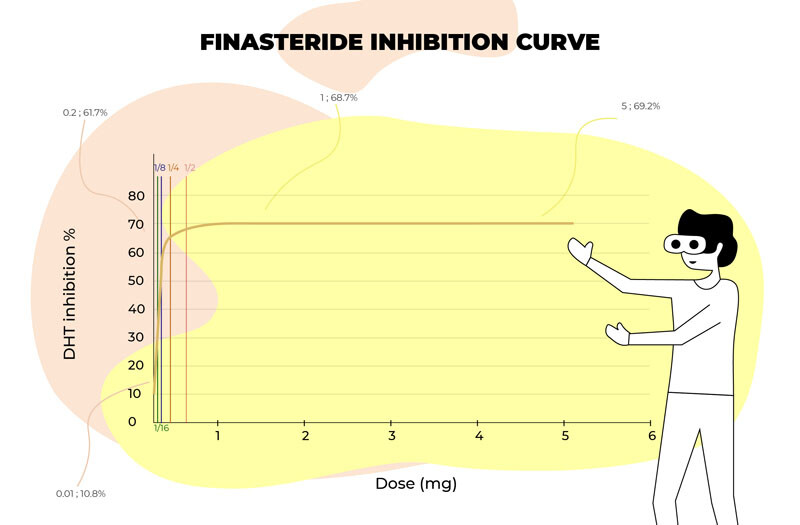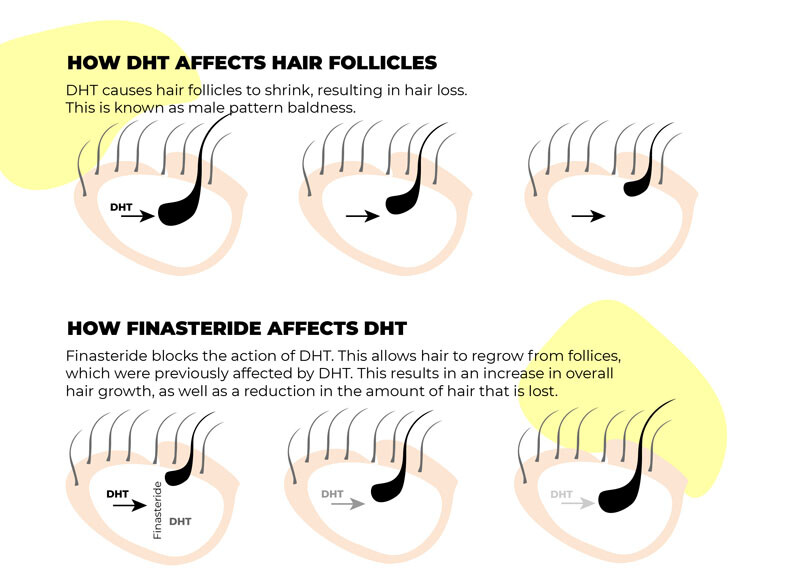Propecia (Finasteride)
Dosages
Propecia 1 mg
| Quantity | Price per pill | Total price | |
|---|---|---|---|
| 20 | $2.00 | $40.00 | |
| 30 | $1.50 | $45.00 | |
| 60 | $0.92 | $55.00 | |
| 90 | $0.78 | $70.00 | |
| 120 | $0.67 | $80.00 | |
| 180 | $0.61 | $110.00 | |
| 270 | $0.56 | $150.00 | |
| 360 | $0.50 | $180.00 |
Propecia 5 mg
| Quantity | Price per pill | Total price | |
|---|---|---|---|
| 10 | $4.00 | $40.00 | |
| 20 | $2.25 | $45.00 | |
| 30 | $1.67 | $50.00 | |
| 60 | $1.08 | $65.00 | |
| 90 | $1.00 | $90.00 | |
| 120 | $0.92 | $110.00 | |
| 180 | $0.83 | $150.00 | |
| 270 | $0.67 | $180.00 | |
| 360 | $0.60 | $215.00 |
Payment & Shipping
Your order is carefully packed and ships within 24 hours. Here's the typical package.
Sized like a regular personal letter (9.4x4.3x0.3 inches), with no indication of its contents.



| Shipping Method | Estimated delivery |
|---|---|
| Express Free for orders over $300.00 | Estimated delivery to the U.S.: 4-7 days |
| Standard Free for orders over $200.00 | Estimated delivery to the U.S.: 14-21 days |









Discount Coupons
- Independence Day - July 4, 2025 10% JULY410
- Labor Day - September 1, 2025 7% LABOR07
- Thanksgiving - November 27, 2025 9% THANKS09
Brand Names
| Country | Brand Names |
|---|---|
 Argentina Argentina | Anatine Andropel Avertex Conef Daric Eutiz Finasterin Finprostat Finterac Flutiamik Folcres HPB Ivix Fin Nasteril Pelicrep Proscar Prosmin Prostanil Prostanovag Prostene Q-Prost Q-Prost Alopex Renacidin Sutrico Tealep Tricofarma Urofin Urototal Vetiprost |
 Australia Australia | Proscar |
 Belgium Belgium | Proscar |
 Brazil Brazil | Alfasin Capyla Fendical Finalop Finastec Finastil Flaxin Nasterid Nasterid A Pracap Prohair Pronasteron Proscar Prostide Reduscar |
 Canada Canada | Proscar |
 Czechia Czechia | Androfin Apo-Finas Duromeran Edufil Finajelf Finanorm Finard Finex Finpros Gefin Ibition Lekoprost Mostrafin Penester Proscar Radicut |
 Denmark Denmark | Proscar |
 Finland Finland | Finaprost Fina Uro Gefina Proscar Prostafin Tifisterid |
 France France | Chibro-Proscar |
 Germany Germany | Finamed Finascar Finural Proscar Prosmin |
 Greece Greece | Finar Finastir Glopisine Pervil Poruxin Prohype Proscar Prostafin |
 Hungary Hungary | Finpros Proscar Prosterid |
 Italy Italy | Finastid Genaprost Proscar Prostide |
 Malaysia Malaysia | Proscar |
 Mexico Mexico | Fhilterin Propeshia Proscar Riterid-Z Vanorid |
 Netherlands Netherlands | Finaburg Finagalen Finahold Finajelf Finaschwarz Finastad Proscar |
 New Zealand New Zealand | Fintral Proscar |
 Norway Norway | Proscar |
 Poland Poland | Ambulase Apo-Fina Aprost FinaGen Finamef Finaran Finaride Finaster Finpros Fintral Finxta Hyplafin Lifin Penester Proscar Symasteride Ulgafen Zasterid |
 Portugal Portugal | Binpros Finox Growancer Proscar Prostacide Prostafin Zidoril Zylfina |
 Spain Spain | Ativol Eucoprost Folitabs Proscar Urprosan |
 Sweden Sweden | Proscar |
 Turkey Turkey | Dilaprost Finarid Proscar Prosterit |
 United States United States | Proscar |
| Manufacturer | Brand Names |
|---|---|
| Ajanta Pharma Limited | Appecia Proscalpin |
| Fortune Healthcare Pvt. Ltd. | Appecia Proscalpin |
FAQ
Description
 What Is Propecia
What Is Propecia
Propecia with Finasteride as the active ingredient is a remedy for stopping hair loss. Finasteride sometimes allows new terminal hair to grow back, but this is rare. It is believed that the main goal is to stop further baldness. This medication is taken as tablets orally every day. Propecia, a finasteride-based drug, is approved by the US Food and Drug Administration (FDA or USFDA, a government agency under the US Department of Health). It is one of only two drugs approved by the FDA for the treatment of alopecia.
Description
The only finasteride-based medication for stopping baldness is Propecia. This drug has 1 mg of finasteride per pill. One tablet a day is taken to treat baldness. There is also Finpecia, the Indian analog of Propecia (produced by the pharmaceutical company CIPLA), which does not differ from Propecia in composition and dosage but is much cheaper.
There are also other drugs in which the active ingredient is still the same, Finasteride, but which are designed to treat prostate adenoma. They do not differ in composition but in the dosage of Finasteride in each tablet, which is increased to 5 mg compared to Propecia and Finpecia. These include Alfinal, Vero Finasteride, Penester, Proscar, Prosteride, Finasteride, Finast, and others.
Phase III trials of Propecia were conducted over several years. The trials involved 60 dermatology clinics (33 in the US) and 1,533 volunteers. Of that number, 1,215 volunteers continued to participate in the Propecia trial for the second year. The participants' ages ranged from 18 to 41 years. The degree of baldness, according to Norwood, was 3-5. All participants took 1 mg of Propecia or placebo each day.
Objective and subjective measures were used to assess the results. The subjective analysis included questioning participants about their treatment outcomes. The objective analysis included measurements of hair density and thickness, duration of the anagen phase, and other measures. Dermatologists who did not know what the participants were taking (Propecia or placebo) assessed the subjective and objective measures.
The first year of the trial showed these results:
- an increase in hair density of +86 per 1 inch2 (+11%) for those taking Propecia;
- reduction in hair density -21 per 1 inch2 (-2.7%) for those taking Placebo;
- new hair growth in 48% of those taking Propecia;
- new hair growth in 7% of placebo users;
- 30% (of 48%) slightly noticeable new hair growth for those taking Propecia;
- 18% (of 48%) noticeable new hair growth for Propecia users;
- 6% (of 7%) slightly noticeable new hair growth for those taking placebo;
- 1% (out of 7%) noticeable new hair growth for placebo patients.
The second year of the trial showed no further increase in hair density. However, further improvements in overall hair health were noted due to an increase in the anagen phase and diameter of the hair shaft. Patients taking the placebo continued to lose hair.
Finasteride inhibits 5-alpha reductase type 2, which is about 70% of all 5-alpha reductase in the body. But there is also 5-alpha reductase type 1, which is not affected by Finasteride for hair loss. Therefore, this enzyme continues to exist in the hair follicles. In addition, if the follicles are hypersensitive to dihydrotestosterone, even a small amount will be enough to continue hair loss.

Propecia Uses
First, ensure that hair loss (alopecia in the scientific sense) is not a hereditary problem. If it is, you need to get the process under control as early as possible. Contact a trichologist, and they will prescribe medications, laser treatment or suggest transplantation. If it's not genetics, but your hair has started to fall out more than usual, then look for the cause of the improper functioning of the body and consult a general practitioner.
It can be hormonal disorders associated with thyroid disease or taking low-quality contraceptives, prolonged Finasteride uses of antibiotics or antidepressants, infectious diseases, as well as diets that do not include beneficial elements for humans. The problem of loss can also occur due to anemia - a decrease in hemoglobin concentration in the blood. Finasteride is taken orally regardless of meals, one tablet (5mg) per day for 6-7 months.
How It Works
Once in the bloodstream, Finasteride binds to 5-alpha reductase type 2 instead of testosterone, thus preventing the conversion of testosterone to digital testosterone.

What Are The Possible Propecia Side Effects
Finasteride side effects of Finasteride include reversible loss of libido, decreased ejaculate volume, and erectile dysfunction, which occurs in about 2% of men. Long-term sexual dysfunction (post-finasteride syndrome) has been reported, but its incidence is unknown. Rare side effects of Finasteride have also been reported: mood changes/depression, gynecomastia, testicular pain, and hypersensitivity reactions.
Common Side Effects
In the original study of Finasteride, these side effects were found in only 2% of patients. However, a recent study has questioned the validity of this claim. It found that none of the 34 clinical trials had adequate safety reports. Among the most shocking revelations about these trials were the following:
- 53% disclosed a conflict of interest;
- 56% had funding from the manufacturer;
- 76% had a drug safety evaluation duration of less than one year.
If true, the incidence of sexual side effects from Finasteride (Propecia and Proscar) may be much higher than the stated initial 2%. Because of its anti-androgenic properties, Finasteride is sometimes used in hormone replacement therapy in transgender men in combination with a form of estrogen. However, there is too little clinical trial data on Finasteride's use for this purpose, and the evidence for its efficacy in this area is minimal. Indeed, Finasteride, compared to conventional antiandrogens such as spironolactone and cyproterone acetate, is a significantly weaker substance.
Common Side Effects:
- breast lumps;
- breast pain or tenderness;
- nipple discharge;
- any other breast changes.
In addition, its use is associated with a high risk of developing depression and anxiety in both men and women; transsexuals are at exceptionally high risk because such symptoms are very common among this group of patients. Therefore, it is not recommended that Finasteride be prescribed as an antiandrogen for transsexual men because the drug increases the risks of harmful emotional side effects. Finasteride has also been found to help mitigate the effects of withdrawal after chronic alcohol use.
Serious Side Effects
UK pharmacovigilance has data on several cases of major depression and suicidal ideation in patients receiving Finasteride. However, these side effects have been reported in patients with and without a history of depression.
- It should be noted that cases of depressive mood have been reported before on Finasteride. However, a recently published review suggests a potential risk of major depression. This data will likely serve as a reason to update information about the drug.
- Practitioners and patients should also be aware of sexual dysfunction that may be associated with taking Finasteride. These include decreased libido, erectile dysfunction, and impaired ejaculation (reduced ejaculation volume).
Many sports organizations have banned Finasteride because the drug can be used to disguise steroid use. Since 2005, Finasteride has been on the World Anti-Doping Agency's list of banned substances. However, the drug was removed from the list in 2009. Some famous athletes who used Finasteride as a remedy for hair loss and had been excluded from international competitions are skeleton Zack Lund, bobsledder Sebastian Gattuso, soccer player Romario, and ice hockey goalie Jose Theodore.
Serious Side Effects:
- loss of interest in sex;
- impotence;
- trouble having an orgasm;
- abnormal ejaculation.
Women of childbearing age and pregnant women should avoid contact with the drug. It has teratogenic properties (its ability to inhibit the conversion of testosterone into dihydrotestosterone may cause abnormal genital development in the male fetus) and penetrates the seminal fluid. Causes a decrease in prostate-specific antigen after 6 and 12 months of use by 41 and 48%, respectively. Patients should be screened to rule out prostate cancer during therapy with Finasteride.
How To Take
It is taken orally with liquids and swallowed as a whole (tablets should not be divided or crushed), regardless of meals. The recommended dose is 5 mg (1 tablet) once a day. Treatment may be continued for up to 6 months if necessary until the clinical effect is achieved.
No dose adjustment is required in patients with hepatic impairment. Dose adjustment is not required in patients with renal insufficiency of varying severity (when CKD decreases to 9 ml/min). No dose adjustment is required in elderly patients.
Dosage For Male Pattern Hair Loss
In case of male pattern baldness, take 0.2 mg of the active ingredient once a day. Note that one tablet contains 1 mg of the active ingredient. Your doctor may adjust the dosage depending on your age and symptoms. However, the maximum dose of 1 mg of the active ingredient per day should not be exceeded.

Dosage For Benign Prostatic Hyperplasia
For benign prostatic hyperplasia: Take 5 mg of active ingredient once a day. The prescribing physician may adjust the Finasteride dosage according to age and symptoms.
How The Medication Is Supplied
They are supplied as follows:
- NDC 0006-0071-31 bottles of 30 (with desiccant).
- NDC 0006-0071-54 PROPAK bottles of 90 (with desiccant).
Propecia Dosage Forms And Handling
For the treatment of male androgenic alopecia androgenic, the recommended dosage of Finasteride is 1 mg per day. The medication may be taken with or without food.
Storage
Store the drug in a dry place protected from light. Keep out of reach of children.
Drugs, Substances, or Supplements Interaction
Since other medications (Alfinal, Vero Finasteride, Pentester, Proscar, Prosteride, Finasteride, Finast, and others) contain 5 mg of Finasteride in 1 tablet, you need to divide each tablet into five parts and take 1/5 tablet each day. This way, you will get 1 mg of Finasteride daily, just like when you take Propecia Finasteride.
|
PROPECIA N=945 |
Placebo N=934 |
|
|
Decreased Libido |
1.8 |
1.3 |
|
Erectile Dysfunction |
1.3 |
0.7 |
|
Ejaculation Disorder (Decreased Volume of Ejaculate) |
1.2 (0.8) |
0.7 (0.4) |
|
Discontinuation due to drug-related sexual adverse experiences |
1.2 |
0.9 |
Overdosage & Contraindications
Hypersensitivity, pregnancy, women of childbearing age, children. Take the drug with caution. Liver failure, obstructive uropathy. Patients received Finasteride in a single dose of up to 400 mg and multiple doses of up to 80 mg/day for three months, with no adverse effects observed.
There are no recommendations for specific treatment of finasteride overdose.
Propecia Warnings
In patients with significant residual urine volumes and/or sharply reduced urine flow, the possible development of obstructive uropathy should be closely monitored. The agency concluded that although there was no significant increase in the overall incidence of breast cancer in men in clinical trials when Finasteride was taken at a dose of 5 mg, the possibility of an increased risk of breast cancer in men cannot be excluded with Finasteride. A warning about this risk will be included in the product information. Merck has revised the warning on consumer and medical leaflets in the US to include the risk of breast cancer in men.
Allergy Warning
Allergic reactions: common-skin rash; rarely-skin itching, urticaria, and angioedema of the lips and face.
Warnings For People With Certain Health Conditions
Before initiation of therapy, diseases simulating benign prostatic hyperplasia - prostate cancer, urethral stricture, hypotension of the bladder, disorders of its innervation, and infectious prostatitis - should be excluded.
Contact With Drug Warning
People suffer from side effects when taking Finasteride (Propecia). Medications affect different people differently. However, taking Finasteride is not as dangerous as some people imagine.
Propecia hair loss was approved as a treatment in 1997, so it has been quite a long time. This drug has undergone many tests and has been proven safe and effective.
Propecia has various advantages when treating male pattern baldness. It efficiently prevents testosterone from being converted to dihydrotestosterone (DHT), which is the hormone that causes hair follicles to shrink in people who are genetically prone to it. Propecia helps to stop hair loss and, in certain situations, even encourages hair regeneration by lowering DHT levels. It is a well-liked and long-lasting treatment for hair loss because of its easy oral dosing form and comparatively minimal risk of side effects.









